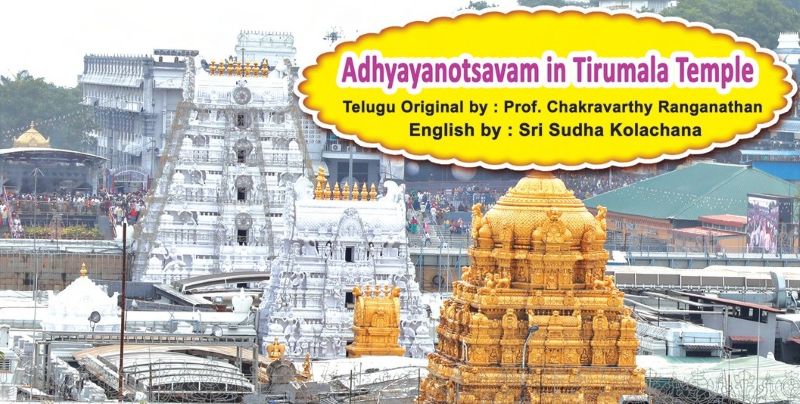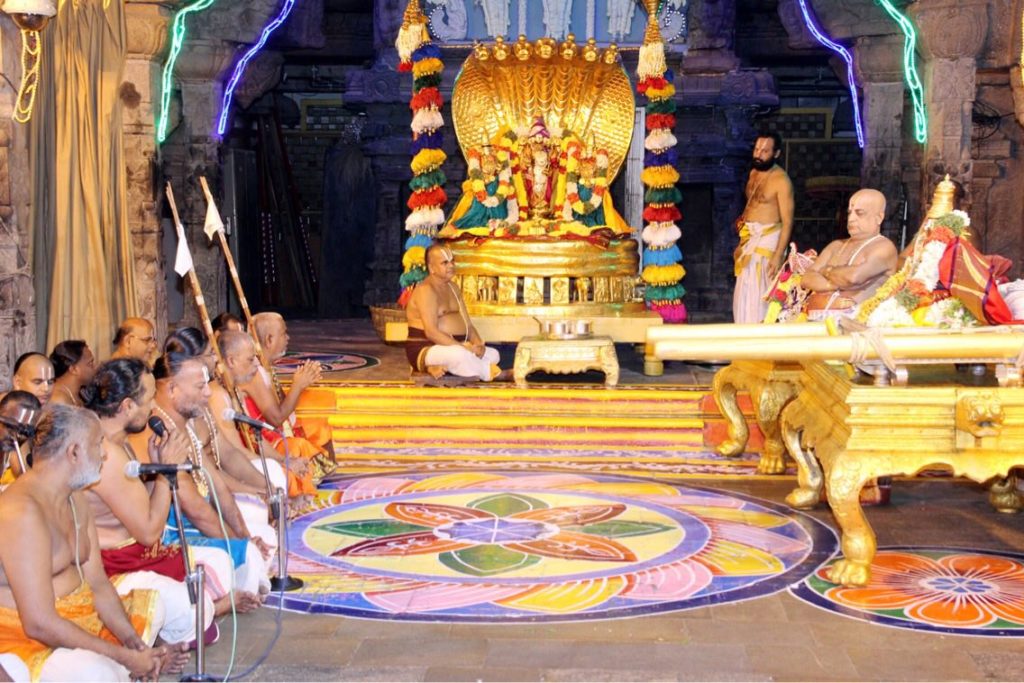Adhyayanotsavam in Tirumala Temple Many festivals are held throughout the year in the divine presence of Lord Srinivasa, the Brahman of Akhilandakoti i.e., the Creator of the entire universe. There are many festivals such as Nityotsava (daily), Varotsava (weekly), Pakshotsava (biweekly), Nakshatrotsava (according to stars), Masotsava (monthly), Ayanotsava (half yearly) and Samvatsarotsavas (yearly). One of Read More
Tag: Adhyayanotsavam
The day when Sri Nammalwar attained the abode of the Lord, is observed as ‘Adhyayanotsavam’ (Adhyayana Utsavam) or ‘Vaikunta Utsava’ or ‘Prasanna Utsava’ or ‘Moksha Utsava’.
Adhyayanotsavam at Tirumala
Adhyayanotsavam The Lord of Seven Hills is worshipped every moment in the form of one or the other seva or Utsavam (procession). These utsavas provide a blissful experience to the devotees. Around 1000 years ago, the famous Sri Vaishnavaite, Bhagavad Ramanujacharya also visited the divine shrine and made arrangements to assist in the performance of Read More
Significance of Parivattam in Tirumala Temple
What is Parivattam The tradition of tying a piece of cloth around the forehead during important festivals is known as Parivattam. This is an ancient custom in almost all the temples in South India, yet this custom has more importance in the temple of Lord Venkateswara. A piece of cloth torn from the worn dress Read More


